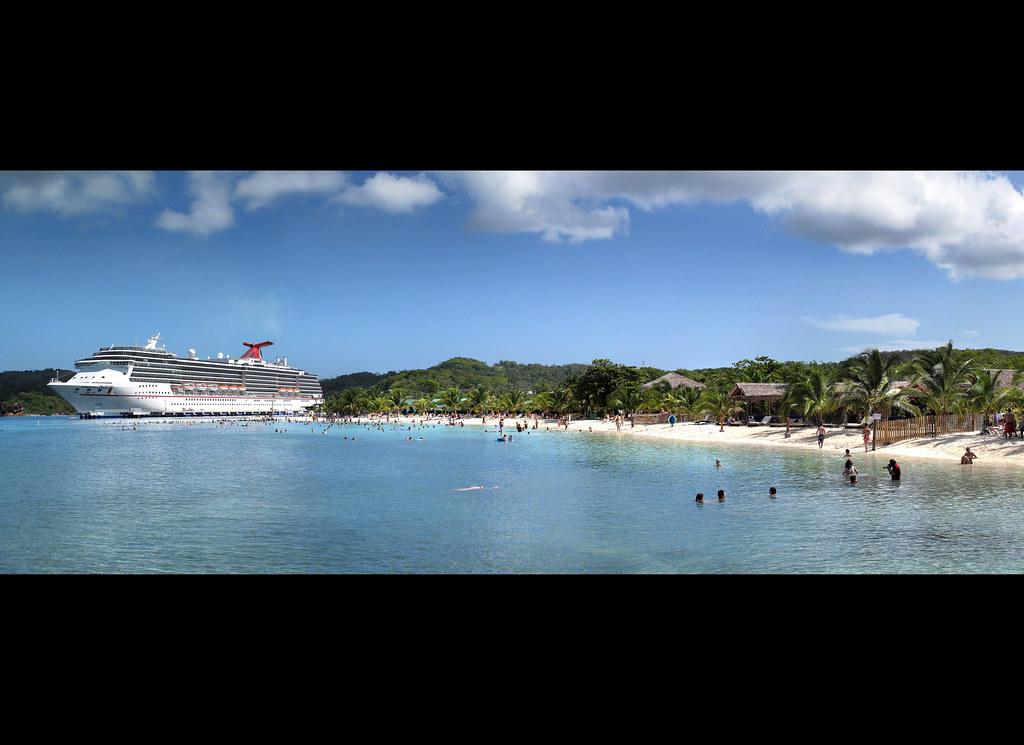In an era where wanderlust knows no bounds, the world’s most iconic sites have become magnets for millions seeking awe and adventure. From the ancient grandeur of the Pyramids of Giza to the breathtaking vistas of Machu Picchu, these landmarks stand as testaments to human achievement and natural wonder. However, as the number of tourists surges, so too does the strain on these cherished sites. This raises a pressing question: should governments step in to limit the throngs of visitors to preserve these treasures for future generations? Balancing the allure of tourism with the imperative of conservation is a complex dance, inviting a dialogue that weighs economic benefits against environmental and cultural sustainability. As we delve into this multifaceted issue, we explore the potential paths forward, seeking harmony between exploration and preservation.
Balancing Preservation and Accessibility at Iconic Landmarks
As more travelers flock to the world’s most celebrated landmarks, a delicate dance emerges between maintaining their timeless allure and ensuring they remain open for exploration. Striking a balance between preservation and accessibility requires thoughtful strategies, often placing governments at the crossroads of tough decisions. To safeguard these irreplaceable sites, authorities may consider various measures to control the impact of tourism. These include:
- Implementing Visitor Quotas: By limiting daily or annual visitor numbers, governments can reduce wear and tear on historical sites, allowing for better conservation efforts.
- Introducing Timed Entry Tickets: Scheduling visits through timed tickets can help manage crowds, offering a more enjoyable experience while preventing overcrowding.
- Enhancing Infrastructure: Developing sustainable infrastructure, such as eco-friendly transport options and better waste management systems, can mitigate the environmental impact of increased tourist footfall.
These initiatives, while potentially controversial, aim to preserve the integrity and historical value of these cherished sites. Balancing preservation with accessibility ensures that future generations can experience the same awe and wonder that these landmarks inspire today.

Assessing the Environmental Impact of Unchecked Tourism
The allure of iconic destinations often leads to a dramatic increase in visitor numbers, which can result in significant environmental degradation. Unchecked tourism can disrupt local ecosystems, lead to the depletion of natural resources, and cause damage to cultural heritage sites. The trampling of vegetation, littering, and pollution from vehicles are just a few examples of how excessive tourism can take a toll on these fragile environments.
To mitigate these impacts, governments might consider implementing strategies such as:
- Establishing visitor quotas to control the number of tourists allowed at a site at any given time.
- Developing sustainable tourism practices, including eco-friendly transportation and accommodations.
- Investing in infrastructure that supports both tourism and conservation efforts.
- Educating visitors on the importance of preserving the environment and respecting local cultures.
By adopting these measures, governments can balance the economic benefits of tourism with the need to protect and preserve iconic sites for future generations.

Exploring Economic Implications of Visitor Restrictions
When considering the financial landscape of restricting tourist numbers at renowned destinations, several economic implications emerge. On one hand, fewer visitors could mean a decline in immediate revenue from entry fees, local accommodations, and related tourist activities. This potential reduction in income might initially alarm stakeholders who rely heavily on tourist dollars. However, by fostering a more exclusive experience, destinations could potentially charge higher fees, catering to tourists willing to pay a premium for less crowded and more serene environments. This shift could balance, or even surpass, the revenue lost from fewer visitors.
Moreover, the long-term economic benefits may outweigh the short-term financial concerns. By implementing visitor restrictions, governments can help preserve the site’s natural beauty and cultural heritage, ensuring that it remains a desirable location for future generations. This approach could lead to several positive outcomes:
- Enhanced visitor experience: Fewer crowds often lead to more enjoyable and meaningful interactions with the site.
- Increased sustainability: Limiting numbers helps protect the environment and reduces wear and tear on infrastructure.
- Diversification of local economies: Encourages the development of alternative revenue streams beyond mass tourism.
Ultimately, while the immediate economic impact of visitor restrictions might seem daunting, the potential for sustainable and long-term economic stability presents a compelling argument for governments to consider such measures.

Strategies for Implementing Effective Tourist Management Policies
In the quest to balance preservation with accessibility, several strategies have emerged that can guide the formulation of effective tourist management policies. One approach is the introduction of timed entry systems, where visitors book their visits in advance, allowing site managers to control the flow and number of tourists at any given time. This method not only reduces overcrowding but also enhances the visitor experience by minimizing wait times and congestion. Additionally, implementing a dynamic pricing model can be effective, where entrance fees fluctuate based on demand, encouraging visitation during off-peak times and distributing the tourist load more evenly throughout the year.
- Visitor Education Programs: Raising awareness about the importance of conservation and respectful behavior at sites.
- Local Community Involvement: Engaging local communities in the management process to ensure that tourism benefits are equitably shared.
- Infrastructure Improvements: Enhancing facilities and services to accommodate tourists without compromising site integrity.
- Technology Utilization: Leveraging apps and digital platforms to provide real-time information on site conditions and visitor numbers.
By employing a combination of these strategies, governments can effectively manage tourist numbers while ensuring that iconic sites remain sustainable and accessible for future generations. The key lies in tailoring these approaches to the unique characteristics and needs of each site, fostering a symbiotic relationship between tourism and conservation.
Final Thoughts
As the sun sets on the debate surrounding the regulation of tourist numbers at iconic sites, the horizon remains vast and open, much like the landscapes these sites so magnificently inhabit. Whether governments should step in to limit the footfall on these cherished grounds is a question that intertwines environmental stewardship with economic vitality, cultural preservation with global curiosity. The path forward requires a delicate balance, one that respects both the earth and its inhabitants, whether local or visiting. As we tread this path, let us remember that the heart of travel is not just in the destinations we reach, but in the respect and understanding we cultivate along the way. The dialogue continues, inviting voices from every corner of the globe to weigh in, ensuring that the world’s wonders remain both revered and accessible for generations to come.
































